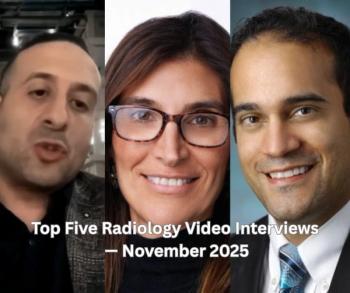
ACR expands accreditation process to include 3T magnets
Accreditation is moving forward in some ways but backward in others. The American College of Radiology, the prime driver in the U.S., has expanded its MR accreditation process to include 3T scanners, acknowledging demands for accreditation by third-party payers and regulators and citing the increasing adoption of this technology as the reason.
Accreditation is moving forward in some ways but backward in others. The American College of Radiology, the prime driver in the U.S., has expanded its MR accreditation process to include 3T scanners, acknowledging demands for accreditation by third-party payers and regulators and citing the increasing adoption of this technology as the reason.
At the same time, however, the college has pulled back on accreditation as it addresses a lower tech solution: radiography and fluoroscopy. The R/F accreditation program, launched just three years ago, is now discontinued.
The interest in accrediting this x-ray-based modality was less than anticipated, according to Leonard Lucey, senior director for nonbreast imaging accreditation programs. The accreditation process for R/F is labor- and resource-intensive. Coupled with the fact that no third-party payers require such accreditation, the program just didn't take off. Three-T MR is an entirely different situation.
"More and more accredited sites are switching from 1.5T to 3T," Lucey said. "We're responding to our members' needs."
The number of sites purchasing 3T scanners has doubled during each of the past two years, reaching 80 units sold in the U.S. alone last year, according to industry sources. The ACR initiated preliminary work on the accreditation process for 3T scanners last summer, when its staff began evaluating these very high field systems. Data gathered from sites using the magnets have since been incorporated into the ACR accreditation process, Lucey said.
The accreditation process for 3T scanners is under the same program as the one that serves 0.5T and 1.5T machines. The phantom for these processes was set up primarily for the lower strength scanners, however. The physics for 3T are much different, requiring minor adjustments in the testing criteria so sites could use the same phantom.
The ACR's decision to include 3T is significant because third-party payers increasingly require that sites be accredited in order to obtain reimbursement. Several states also require accreditation, and Congress is investigating whether national quality standards should be enacted for performing and interpreting outpatient diagnostic imaging covered by Medicare.
The challenge for the future will be devising accreditation programs for niche imaging, such as breast MR, Lucey said. Current MR accreditation is for whole-body. Consequently, facilities are required to send images of the brain, abdomen, and periphery - but not other body areas.
"We'll have to decide how something like breast MR will fit into our program, or if we need to design a new program," he said.
An expansion into niche applications might open the door for accrediting scanners dedicated to specific body areas, notably the many orthopedic scanners now in service and entering the marketplace. Proponents of these niche scanners would like nothing better. This equipment has a history of sales stretching over 13 years and a worldwide installed base in excess of 1300 units dedicated to orthopedic applications, 500 of which are sited in the U.S., according to industry sources.
Newsletter
Stay at the forefront of radiology with the Diagnostic Imaging newsletter, delivering the latest news, clinical insights, and imaging advancements for today’s radiologists.


























